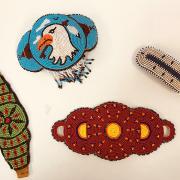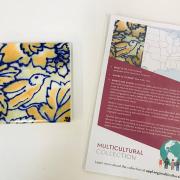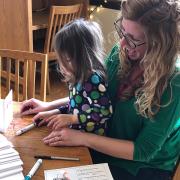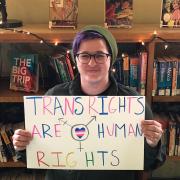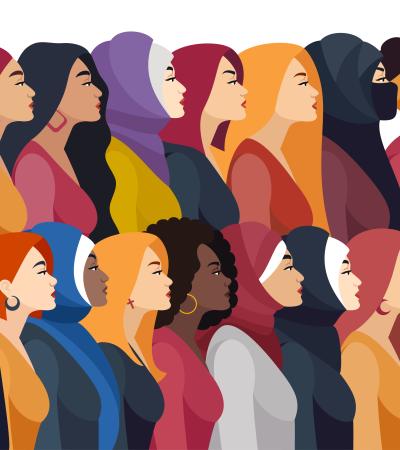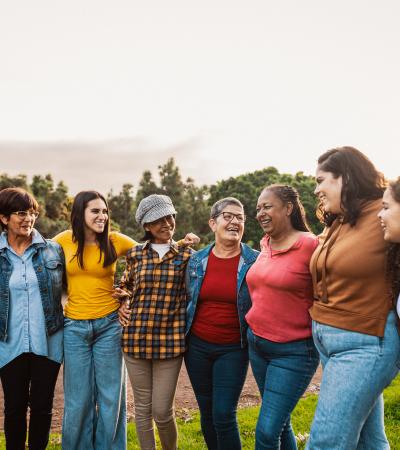Our library has a collection of American Girl Dolls and a multicultural collection with artifacts from all over the world. Both circulating collections are very popular.
We decided to create a program linking the artifacts to the historical American Girl dolls based on the characters’ causes, the beliefs they stood for, and what their corresponding books are about.
We created four stations featuring dolls by a theme or cause and paired them with artifacts. Each child was given a clue sheet so as they visited the stations, they had an activity to complete as well as a scavenger hunt item to find.
Advanced Planning
We knew that we didn’t want to recreate the experience of going to an American Girl Doll store. Instead, we wanted to focus on the causes and talk about what each girl believed in and advocated for.
We scheduled the event on a Monday from 2 to 3:30 p.m. during our school district’s spring break. We started planning about three months ahead of time, deciding which topics and activities would work for the stations and which dolls correlated with those stations.
From there, Naomi created the artifact clue sheets that connected to various artifacts, while Shelley and Jenny created the scavenger hunt that related to the dolls. By following the clues, attendees decoded a secret message.
Marketing
The library’s communications team posted the event on social media. Shelley created fliers featuring Kit and her intrepid mystery-solving. Those fliers were posted at each library location near the collection of American Girl Doll books.
Jenny reached out personally to families who she knew would enjoy the event.
Budgeting
The total cost ended up being around $250. We paid Sugar Beet Schoolhouse, a local organization that educates children about food and healthy eating, $150 to do the food station. Our costs didn’t include the dolls or artifacts since we already had those.
Day-of-event Activity
Our biggest task was setting up the various stations. We opened a small, two-room branch that is typically closed on Mondays to give us the whole space to provide learning stations where families had space and time to explore. This also led to many meaningful interactions between those staffing the event and those who attended. An event like this would also fit well in a large meeting room or throughout a children’s department.
Attendees entered the library and were met by a staff member who invited them to solve Kit’s mystery with their clue sheets/scavenger hunt materials. This served as a perfect space and time to explain the meaning behind the event and what families were going to be doing.
Art Appreciation Station
Here we included the dolls Josefina, Kaya and Maryellen. Kaya is from the Nez Perce Tribal Nation, so we had Nez Perce beadwork for the kids to learn about. One of our coworkers designed a craft inspired by Kaya, which allowed the kids to create something that resembled the artifacts they were spending time with.
The Victory Garden Station
This station represented the war effort with dolls Molly, Nanea and Addy. In this station, we talked about Victory Gardens, which Americans on the homefront planted in the face of food rationing. The gardens are most often thought of in terms of World War II, but similar gardens have been used in different wars.
For this station, we collaborated with the local nonprofit Sugar Beet Schoolhouse. They created a menu, designing a recipe that was easy for kids and tied into what kids would have made in the past. Since March is when you plant peas, we made spring pea sandwiches. We set out the ingredients in bowls, and the kids mashed them together and then used cookie cutters to cut up the bread to make themselves sandwiches.
The kids were so happy to try new things! One young friend shared that “she did not like any of the ingredients, but that it was the best sandwich she had ever had.” This could easily be done inexpensively without outside collaboration.
The Immigration and Refugee Station
Here we featured Rebecca and Kirsten. Our goal here was to explain, as simply as possible, what it means to be a refugee and what it might be like for kids coming from other places. We had a tile from the Tenement Museum in New York to represent Rebecca and a Dala Horse from Sweden for Kirsten.
For the activity, we had pieces of cardstock to act as suitcases, and we gave the kids Post-it notes and asked them to think of 10 things they would want to take with them if they were leaving their homes and could never go back. We had them write the items on the Post-its and stick them to their “suitcases.” Then we narrowed down the list to 7 things, then 5, and so on, until we got to one thing — or none, for some people. It was powerful to watch the kids do this activity. Most kids said the most important thing they’d bring with them was their family.
In the Oak Park area, our local schools do a lot of work with local refugees, so at this station we also had a space for attendees to write welcome notes to families who were coming from other areas around the world. We gave the notes, drawings and pictures to one of the parents, who gave them to the families.
The “Read-In” Station
This station was inspired by sit-in protests from the Civil Rights era. Kids were able to read books about activists and social justice movements. If some of the other activities felt overwhelming for the kids, this station provided a quiet place for families to read and learn together.
This station featured Melody, an activist in the Civil Rights Movement; Julie, who fought for women to be involved in sports; Felicity, who fought for American independence; and Samantha, a suffragist who fought for women’s right to vote. We made buttons that could have been worn at the time of each event. After reading and learning a bit about what it means to protest peacefully, we asked families to consider what they feel passionately enough about to fight for. Then families made posters to support their causes.
Program Execution
When the families first walked in, they were given little pencils and a clue sheet we had designed to look like a reporter’s notepad (see the clue sheet under Attachments at right). Participants had to match the clues on their clue sheets to the artifacts at various stations, which gave them letters that spelled out a secret message, providing the mystery aspect of the program.
We also added a scavenger hunt element to help the kids learn more about the dolls. We had pictures of the dolls on the clue sheet with facts about them that they had to match.
Most of the kids who participated were between 6 and 11 years old. We didn’t have registration, but still had a good turnout of around 60 attendees. We had two employees per station to keep it manageable.
Both boys and girls attended this event. When American Girl started offering boy dolls, we started ordering those too, and we found that this collection is gender-inclusive. Children who identify as male and female are checking out both boy and girl dolls. Attendees were welcome to bring dolls they had checked out or dolls from their homes.
Advice
Collaborate. This program wouldn’t have been possible without an amazing team of people. Everyone brought different strengths, information and ideas to the table.
We thought the scavenger hunt was going to be an add-on, but it ended up being a highlight of the event; it was the first thing almost everyone wanted to do. We planned to have the kids do the hunt as they visited the stations, but most kids quickly visited all the stations, filled out the scavenger hunt sheet, then went back and participated in the station activities.
Supporting Materials
- Feedback (Coming Soon!)
- Programming Librarian Facebook Group

